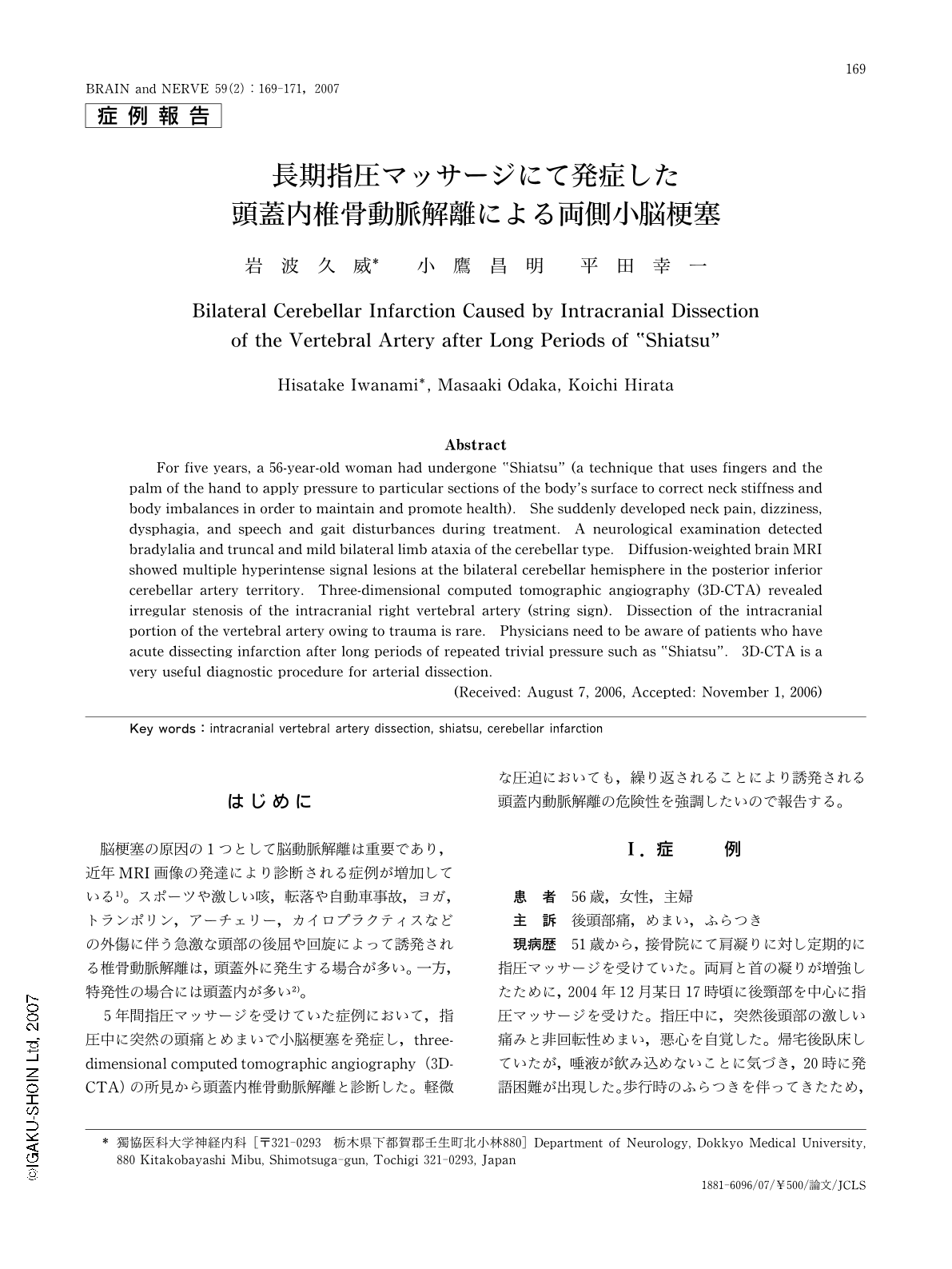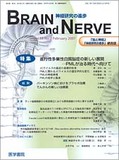Japanese
English
- 有料閲覧
- Abstract 文献概要
- 1ページ目 Look Inside
- 参考文献 Reference
はじめに
脳梗塞の原因の1つとして脳動脈解離は重要であり,近年MRI画像の発達により診断される症例が増加している1)。スポーツや激しい咳,転落や自動車事故,ヨガ,トランポリン,アーチェリー,カイロプラクティスなどの外傷に伴う急激な頭部の後屈や回旋によって誘発される椎骨動脈解離は,頭蓋外に発生する場合が多い。一方,特発性の場合には頭蓋内が多い2)。
5年間指圧マッサージを受けていた症例において,指圧中に突然の頭痛とめまいで小脳梗塞を発症し,three-dimensional computed tomographic angiography(3D-CTA)の所見から頭蓋内椎骨動脈解離と診断した。軽微な圧迫においても,繰り返されることにより誘発される頭蓋内動脈解離の危険性を強調したいので報告する。
Abstract
For five years, a 56-year-old woman had undergone “Shiatsu”(a technique that uses fingers and the palm of the hand to apply pressure to particular sections of the body's surface to correct neck stiffness and body imbalances in order to maintain and promote health). She suddenly developed neck pain, dizziness, dysphagia, and speech and gait disturbances during treatment. A neurological examination detected bradylalia and truncal and mild bilateral limb ataxia of the cerebellar type. Diffusion-weighted brain MRI showed multiple hyperintense signal lesions at the bilateral cerebellar hemisphere in the posterior inferior cerebellar artery territory. Three-dimensional computed tomographic angiography (3D-CTA) revealed irregular stenosis of the intracranial right vertebral artery (string sign). Dissection of the intracranial portion of the vertebral artery owing to trauma is rare. Physicians need to be aware of patients who have acute dissecting infarction after long periods of repeated trivial pressure such as “Shiatsu”. 3D-CTA is a very useful diagnostic procedure for arterial dissection.

Copyright © 2007, Igaku-Shoin Ltd. All rights reserved.


